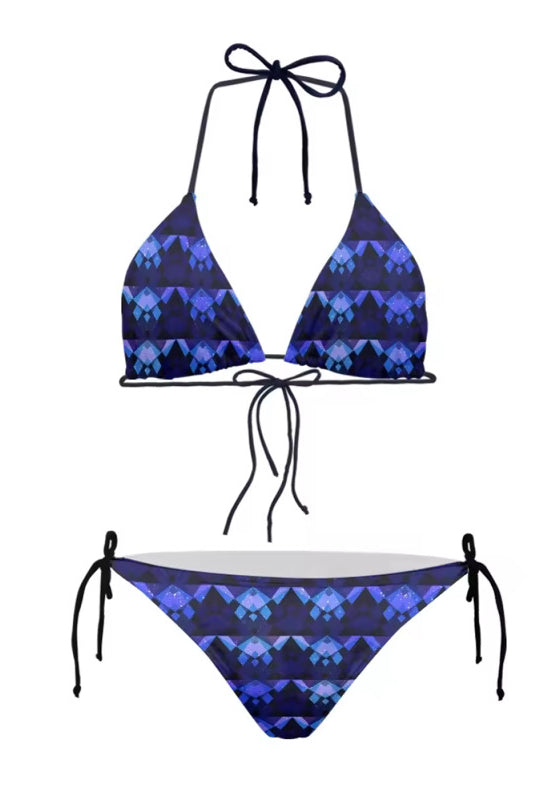The History and Meaning of Adinkra Symbols: From King Adinkra to Modern Inspiration
Adinkra symbols are one of the most powerful cultural heritages of West Africa. They are not only decorative patterns but also a visual language that expresses deep philosophical, spiritual, and moral concepts. Originating among the Akan people of Ghana and Côte d’Ivoire, these symbols are today admired worldwide for their beauty and wisdom.
But to truly understand Adinkra, we must go back in time to the story of King Nana Kwadwo Agyemang Adinkra, the Gyaman ruler whose legacy gave birth to the name “Adinkra.”
1. Who Was King Nana Kwadwo Agyemang Adinkra?
 King Nana Kwadwo Agyemang Adinkra was the ruler of the Gyaman Kingdom, located in present-day Côte d’Ivoire, during the early 19th century. He was renowned for his authority, diplomacy, and cultural influence.
King Nana Kwadwo Agyemang Adinkra was the ruler of the Gyaman Kingdom, located in present-day Côte d’Ivoire, during the early 19th century. He was renowned for his authority, diplomacy, and cultural influence.
King Adinkra was said to wear a special patterned cloth, decorated with symbols that communicated his identity and power. These designs were not random ornaments – they carried philosophical messages, spiritual strength, and royal prestige.
In 1818, however, King Adinkra’s reign came to an end. After conflicts with the Ashanti Kingdom, led by King Nana Osei Tutu Kwame Asibe Bonsu, King Adinkra was defeated in battle. His famous patterned cloth was taken back to Kumasi, the Ashanti capital. From that moment, the legacy of King Adinkra’s cloth spread across Akan culture.
This is why the symbols are called Adinkra today – in honor of King Nana Kwadwo Agyemang Adinkra, the man whose name became synonymous with wisdom, power, and symbolic language.
2. The Origins of Adinkra Symbols
The word Adinkra comes from the Twi language, meaning “goodbye” or “farewell.” Originally, Adinkra cloths were worn at funerals to bid farewell to the dead, symbolizing remembrance and legacy.
But Adinkra symbols are much older than their textile use. They are rooted in Akan philosophy and oral tradition, where each motif is connected to a proverb, belief, or lesson of life. These designs captured the essence of African storytelling – teaching values through visual metaphors.
Traditionally, artisans carved the symbols into calabash gourds, dipped them in natural dye (often made from the bark of the badie tree), and stamped them onto cloth. The fabric was then worn by royals, spiritual leaders, and respected figures during important ceremonies.
3. The Philosophy Behind Adinkra
Adinkra symbols are more than art – they are living philosophy. Each design represents a moral truth, a piece of wisdom, or a reflection on human existence.
For the Akan people, Adinkra reminds individuals of the values that guide life:
-
Faith and spirituality – trusting in divine power.
-
Resilience and adaptability – overcoming challenges with strength.
-
Unity and cooperation – building communities through solidarity.
-
Wisdom and history – learning from the past to shape the future.
This philosophy is why Adinkra symbols continue to inspire people today, across cultures and continents.
4. The Most Famous Adinkra Symbols
Here are some of the most important symbols, many of which trace their cultural spread back to King Adinkra’s time:
-
Gye Nyame (“Except for God”): Symbol of divine supremacy and spiritual protection.
-
Sankofa (“Return and Get It”): A bird looking back, teaching us to learn from the past.
-
Nkyinkyim (“Twistings”): Represents adaptability, resilience, and flexibility.
-
Epa (“Handcuffs”): Symbol of law, justice, and responsibility.

-
Boa Me Na Me Mmoa Wo (“Help Me and Let Me Help You”): Represents mutual support and interdependence.
-
Obohemaa (“Queen of Stone”): Embodies feminine strength, resilience, and beauty.
-
Aban (“Fence”): A symbol of protection, authority, and security.
Fun fact: Today, more than 500 Adinkra symbols are documented, each linked to a proverb or moral teaching.
5. Adinkra in Daily Life
During King Adinkra’s time, these symbols were mainly used by royalty and spiritual leaders. But over the centuries, their use spread to everyday life:
-
Textiles: Adinkra cloths for funerals, festivals, and ceremonies.
-
Architecture: Symbols carved into doors, walls, and furniture.
-
Jewelry and ornaments: Worn as talismans of protection or identity.
-
Pottery and crafts: Decorating tools and utensils.
Each time a symbol was used, it carried meaning – reminding the community of the values that bind them together.
6. From the Royal Cloth to Global Fashion
King Adinkra’s patterned cloth was the beginning of a cultural revolution. Once the Ashanti adopted and spread the designs, Adinkra became a permanent part of Akan identity.
Today, Adinkra inspires global fashion and design:
-
African wax prints and Kente cloths integrate Adinkra motifs.
-
Modern fashion brands (like EBONYS Swimwear) reinterpret the symbols in contemporary designs.
-
Jewelry and tattoos showcase Adinkra as a personal emblem of strength, faith, or resilience.
-
Interior design and digital branding use the symbols as timeless icons of culture and style.
Wearing Adinkra today is more than fashion – it’s carrying ancestral wisdom in a modern world.
7. The Symbolism of Farewell
Why are Adinkra symbols so strongly tied to funerals? Because they carry the idea of farewell, remembrance, and legacy. When someone dies, Adinkra cloths send a message:
-
We honor your life.
-
We remember your values.
-
We continue your legacy.
This makes Adinkra not just about the past but also about continuity and memory – keeping ancestors alive in cultural identity.
8. Adinkra in Modern Business and Branding
Beyond fashion, Adinkra symbols are used by modern brands as part of storytelling.
-
A tech company may use Sankofa to represent innovation rooted in history.
-
A spiritual brand may adopt Gye Nyame to highlight faith and divine power.
-
A community project may use Boa Me Na Me Mmoa Wo to show unity and cooperation.
The minimalist design, deep meaning, and authenticity of Adinkra make them perfect for brands seeking to create emotional connection.
9. Why Adinkra Symbols Matter Today
In a globalized, digital world, people are searching for meaning, authenticity, and roots. Adinkra offers all of these:
-
For Africans and the diaspora, it is a connection to ancestral heritage.
-
For designers and entrepreneurs, it is a source of creative storytelling.
-
For individuals, it is a daily reminder of values like resilience, love, and spirituality.
The story of King Nana Kwadwo Agyemang Adinkra reminds us that heritage is not lost – it evolves, adapts, and continues to inspire.
10. Conclusion: A King’s Legacy That Lives On
The history of Adinkra is the story of a king, a kingdom, and a culture that continues to shine centuries later. From King Nana Kwadwo Agyemang Adinkra’s cloth to the hundreds of symbols used worldwide today, Adinkra represents the power of visual storytelling.
They are not only patterns – they are philosophy, spirituality, and identity.
When you see or wear an Adinkra symbol, remember that you are carrying a legacy that began with a king and continues to guide people around the world.



